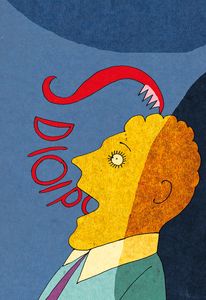Opioids seem to be the opium of the American masses. Worse, opioid medications—or prescription pain killers—are killing thousands of people. Of the 72,000 who died of drug overdose in 2017, two-thirds died from taking opioids. That is a higher toll than deaths caused by guns, car accidents and HIV/AIDS or military casualties in the Vietnam and Iraq wars combined. Dr Nicole Saphier, radiologist at Memorial Sloan Kettering Cancer Center, says, opioid fatalities are “like a 9/11 every three weeks”.
The US accounts for five per cent of the world population, but consumes 80 per cent of the global supply of painkillers. Why do Americans take so much painkillers? The answer is easy availability. Keith Humphreys, a psychiatry professor at Stanford, says that opioid pharmaceutical companies opened a Pandora’s box with their “aggressive marketing and generous donations to political causes and regulatory bodies”.
Earlier, only specialists could prescribe opioid medications to relieve cancer pain. But, in 1998, Big Pharma’s lobbying resulted in laws permitting even dentists to prescribe opioids for all kinds of ailments—stress-related pain, toothaches and chronic maladies. The sale of Purdue Pharma’s opioid, OxyContin, skyrocketed in four years from $48 million to $1.2 billion in 2000. With the root causes unaddressed, pain worsened, increasing dependence on the pill.
Opioids are addictive. Patients crave opioids to dull their pain, for the euphoria it induces or for awakening their deadened senses. Overdosing began. Over 90 million Americans take prescription opioids; two million are addicted. When prescription rules were tightened, patients sought illegal street opioid (heroin derived from opium) and the potent illicitly manufactured synthetic heroin called fentanyl which is 80 times stronger than morphine. These are smuggled from China and Mexico. Studies show that 75 per cent of heroin users started with painkillers. Author Beth Mary who investigated the opioid crisis titled her book Dopesick: Dealers, Doctors, and the Drug Company that Addicted America.
The opioid epidemic has contributed to American life expectancy falling since 2015, the first decline in half a century. President Donald Trump declared opioids a health emergency, but de-addiction and rehabilitation is an extremely difficult process. “It is much easier in America to get high than it is to get help,” says German Lopez, senior reporter at the Vox.
Initially, most opioid victims were low-skilled, white, middle-aged men made jobless by deindustrialisation, globalisation and outsourcing. Support for Trump was greatest in the counties with the highest rates of prescription-opioid use. But, opioid abuse is now rising among blacks and youth. Celebrities, too are victims. Right-wing media personality Rush Limbaugh admitted that he was an opioid addict. Musician Tom Petty and pop star Prince died of fentanyl overdose. Actor Philip Seymour Hoffman died of heroin overdose. Actor Heath Ledger was found dead in New York, overdosed on prescription opioids and sedatives.
In addition to opioids, many celebrities admit taking sedatives, anti-anxiety medicines and other cocktail of drugs like the one that took Michael Jackson’s life. Tesla founder Elon Musk recently admitted that he was taking Ambien sedatives to help him get through an “excruciating” year.
Rich or poor, the promise of the American Dream comes with its peril. In addition to drug overdose, suicides and alcohol-related deaths are also rising. Says Leo Beletsky, associate professor of law and health sciences at Northeastern University, “Something deeper has gone wrong in American life.”
Pratap is an author and journalist.


